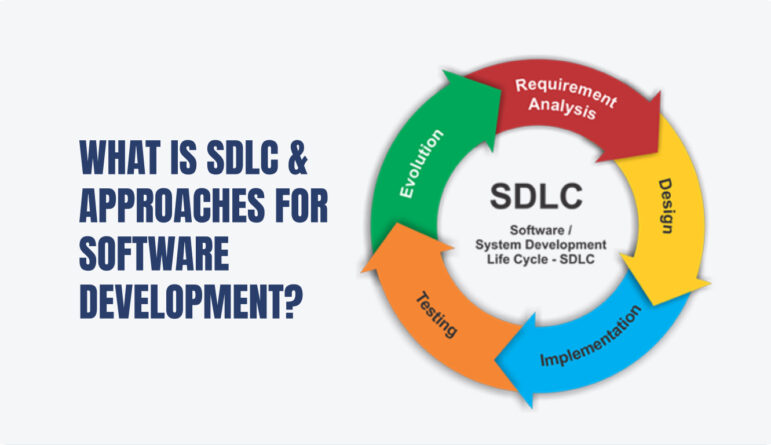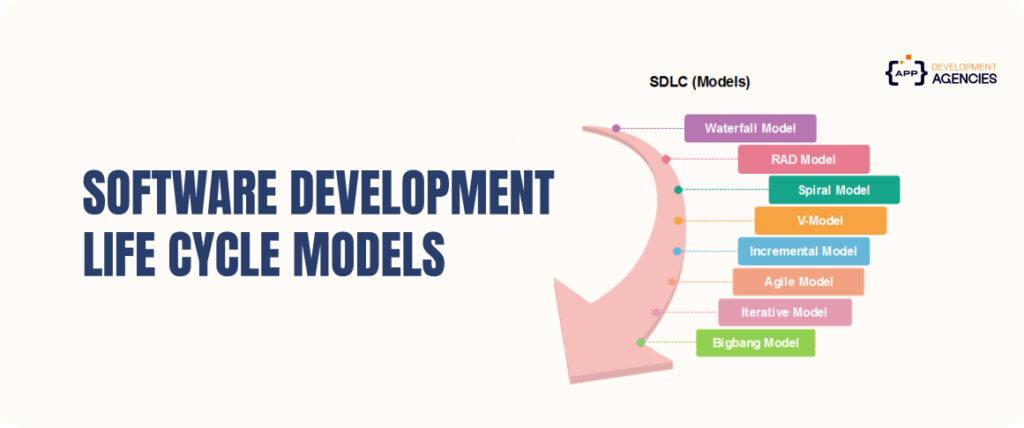
A software development process, often known as the software development life cycle (SDLC), is used in software engineering to organize and oversee software development. Software development provides a solution that efficiently, reliably, and securely satisfies user needs and business objectives.
A software developer writes computer code to accomplish the goal. Research, data and process flow design, technical documentation, thorough testing, debugging, and iteratively pushing it to live are some other phases involved.
Enhance design and/or product management, usually entails breaking up software development work into smaller, sequential, parallel, or smaller phases or sub-processes. Software development teams are increasingly using generative AI and AI-powered technologies to help them write and test code.
In this blog, we will cover the software development life cycle, its goals, processes, and models.
The software industry uses a systematic process called the Software Development Life Cycle to design, build, and test high-quality software. Its primary objective is to create high-quality software. A software that fulfills or excels client expectations and is finished on schedule and within budget.
A software development process is required as it produces software in an orderly fashion. It is employed to verify whether the project will be delivered on schedule. It also looks at the needs of the client and the project. Iterative testing and improvement are also possible with this technique, which can help identify and fix issues early on. We need a software development life cycle for several reasons. Here are a few of them.
The estimates software development life cycle guarantees that the finished product satisfies the customer’s needs.
Effective project timetable management is facilitated by following a software development life cycle. It determines whether or not a project is delivered on schedule.
A well-defined software development life cycle process enables better resource and cost estimation, improves tracking, and effective budget control.
Bugs, flaws, and usability issues can be found and fixed thanks to the process’s testing and quality assurance efforts.

High-quality software products are produced efficiently and effectively when a sound software development process is followed. There are various benefits to a procedure that is well-planned and executed:
From determining what needs to be done to testing and implementation, a sound approach prioritizes quality at every stage. To identify errors, defects, and security flaws early in the development process and address them, it incorporates elements like as code reviews, testing procedures, and quality assurance approaches.
Software development is given a consistent framework by a specified process. It lays down the procedures, responsibilities, and duties, guaranteeing that every project follows the same approach. Because of this consistency, teams can build on their previous work, reuse components, and replicate best practices, which lowers risks and boosts output.
Because it provides clear instructions and routines, a strong process facilitates teamwork. It facilitates communication, information sharing, and collaboration between individuals with diverse roles and duties. Development cycles run more easily and there are fewer misunderstandings when people collaborate.
A clear procedure aids in the early detection of such hazards and offers resources for managing and lowering them. It determines the dangers, coping with them, and what to do in the event of an emergency. The method reduced the project delays, costs more than anticipated, or failure significantly by addressing potential issues early on.
It is one of the most crucial components of a successful software development process. It encourages examining previous initiatives, lessons learned, and feedback loops to identify areas for improvement. Businesses can enhance their software development capabilities, foster innovation, and maintain their competitiveness by evaluating and refining the process.
Now, let’s explore the different stages of the Software Development Life Cycle.
Check out the following steps in the software development life cycle process:
The user contacting the software organization, or service provider, and requesting the desired software product is the first and most important step. After discussing requirements with the client, the software company works to meet their demands.
In this step, the software development team talks with different stakeholders in the problem domain and gives as much information as they can about the software product’s requirements. The requirements may take many different forms, such as functional, system, or user requirements.
Following the collection of requirements, the team uses a variety of algorithms to determine whether the software can be developed to meet all user needs and whether the project is technically, financially, and practically possible for the company.
A software developer chooses a plan’s roadmap and works to create the most stable software model for the project. Understanding product constraints and determining and resolving the project’s influence on the organization are further possible components of system analysis. The project evaluates its scope and allocates resources appropriately.
To plan the design of software products, all of the requirements and analysis knowledge are combined. It uses data acquired during the requirement-gathering stage as well as user input. It produces physical and conceptual design as its product.
The programming phase is another name for this stage. Writing code in an appropriate programming language and creating error-free programs quickly are the first steps in putting software design into practice.
Members of the testers’ development team test software while it is being coded. There are several levels of testing, including user-end, program, product, and module testing.
The software is integrated with libraries, databases, and other programs after all of the front-end, back-end, and database codes have been written.
The software package is at last prepared for the user’s computer to be installed in this stage. Software is evaluated for adaptability, integration, profitability, and other factors.
This stage verifies that the program functions more effectively and with fewer faults. Users receive assistance or training, if necessary, along with documentation on how to use and maintain the product. The code for this software is updated regularly to reflect changes in the user, environment, and technology.

The method that teams use to produce software is known as a software development model. They control the project’s workflow, including how teams interact, how tasks and procedures are finished and verified, and more.
Project managers take into account many factors when choosing a model to build, including the project’s scope, the technical requirements’ complexity, the resources available, the team’s size and expertise, the release date, and the budget.
Typical models for software development include:
From planning and requirements collecting to deployment and maintenance, the waterfall model is a conventional software development methodology that establishes a sequence of continuous processes. Agile approaches are more adaptable than waterfall models. If a phase is not finished, development may be delayed, and going back to earlier stages if a problem is found is frequently expensive and time-consuming. Simple software with few variables may benefit from this procedure.
With one leg of the “V” devoted to testing and the other leg to the SDLC’s stages, this model forms a V-shaped structure. V-shaped models follow a linear sequence of steps, just like the waterfall approach.
The primary distinction is that V-shaped development incorporates related testing into every stage that needs to be finished for development to move forward. Although thorough software testing has some of the same drawbacks as the waterfall effect, such as being less flexible and making it challenging to go back to a prior step, it can help in the early detection of problems in code.
The iterative model includes numerous development cycles, each of which addresses a distinct set of needs and functions. Every development cycle or iteration adds and improves features while drawing on earlier cycles. Other types of development can benefit from the iterative model’s tenets, particularly the cyclical nature of work.
Through incremental development, this iterative approach to software development divides huge projects into smaller “sprints” or consumable functions and produces results quickly. Teams can work more efficiently through the software development process and identify and correct flaws with the support of a continuous feedback loop.
The agile model is expanded upon by the DevOps methodology. It optimizes the delivery of high-quality software by integrating the efforts of IT operations and development teams and utilizing automation. Throughout the software development lifecycle, it encourages cooperation and input from all stakeholders and improves visibility across teams.
Additionally, new goods and updates are tested, tracked, and deployed using automation. Software is regularly tested and optimized to increase performance by DevOps engineers using an iterative approach.
A spiral model incorporates aspects of iterative and waterfall methodologies. A spiral development model, like the waterfall model, lays out a precise sequence of actions. However, it also divides the procedure into several loops or “phases,” which allows development teams greater latitude in examining, testing, and adjusting software as it goes along.
The initial planning and requirements-gathering process serves as the focal point of the spiral-shaped visual representation of these models. The full software delivery cycle is represented by each loop or phase. Teams can review testing, change requirements, and make any necessary code adjustments at the beginning of each new phase. The spiral approach is perfect for big, complicated projects and has advantages for risk management.
Software development has an impact on almost every part of our lives, from designing intricate systems that run corporations to producing user-friendly applications. Development teams may produce high-quality software more quickly and effectively with a well-structured SDLC. The majority of development teams use SDLC to direct their projects, even though different organizations employ different approaches.
Organizations can make informed decisions for their particular development needs by examining the benefits and drawbacks of the SDLC.
Do you want to track application performance and enhance application quality throughout the SDLC? Contact us to see how we can help your company in creating software of a higher caliber.
2 Comments